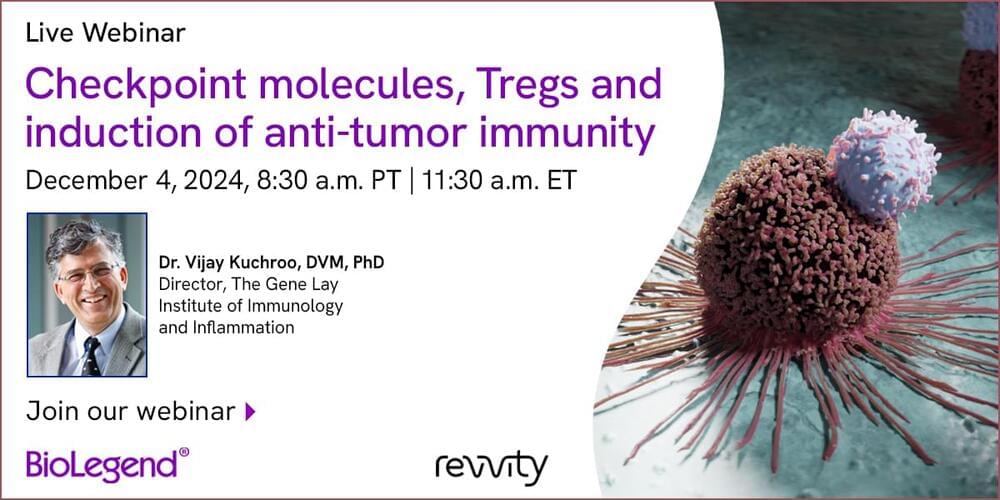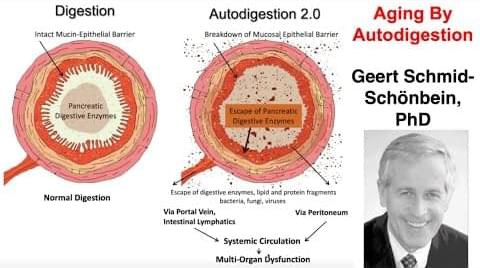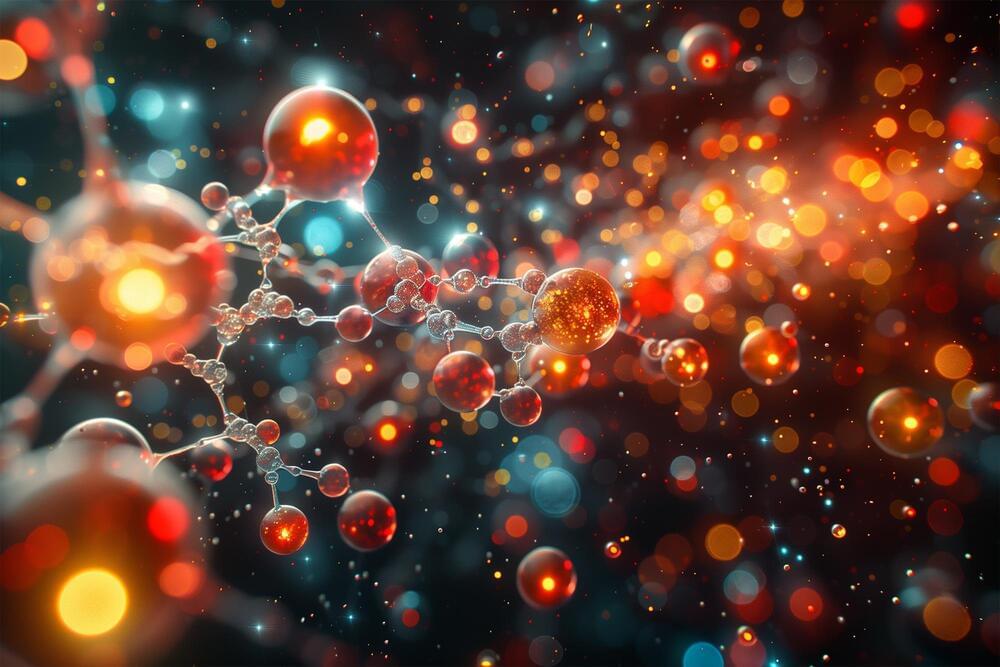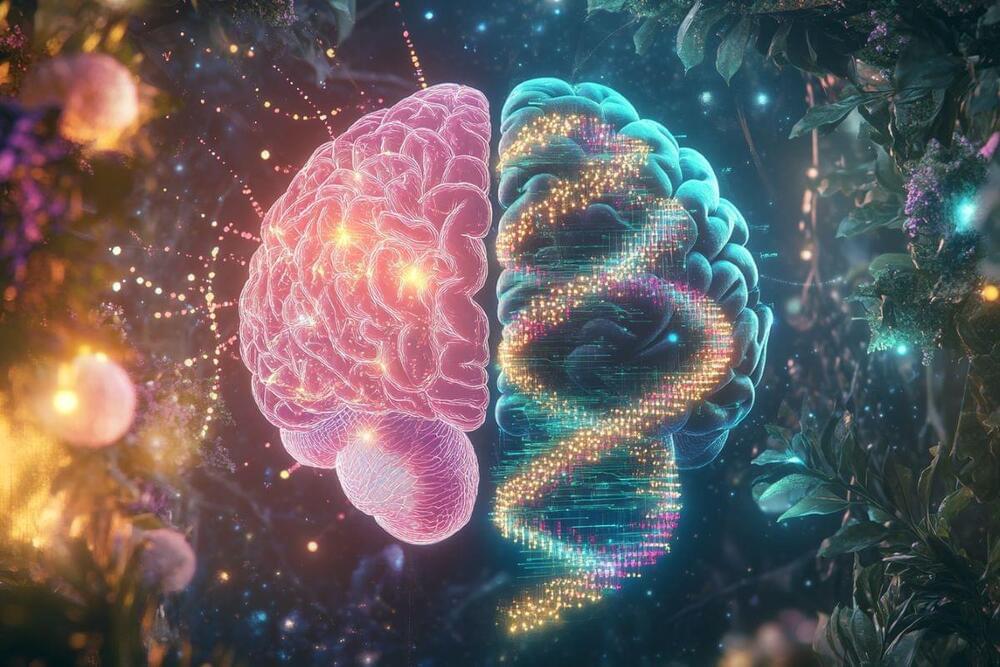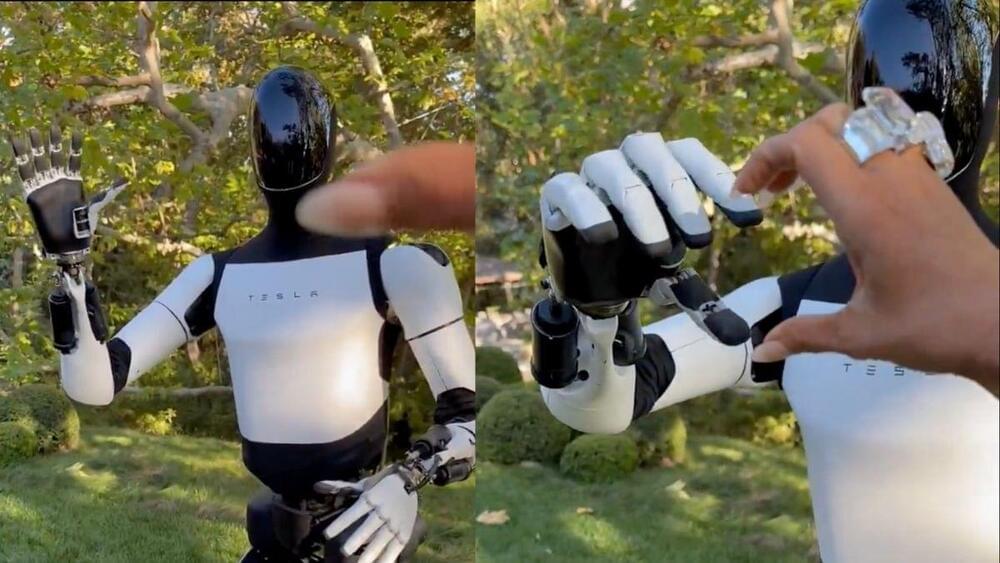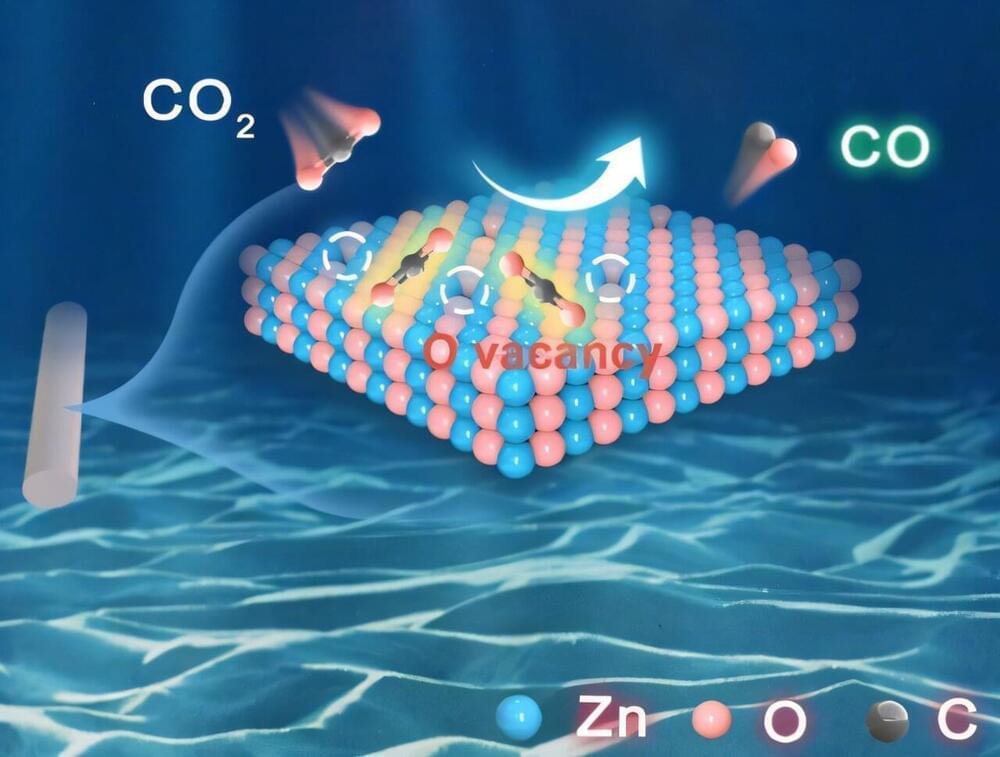Nov 26, 2024
Checkpoint molecules, Tregs and induction of anti-tumor immunity
Posted by Shubham Ghosh Roy in category: biotech/medical
Expression of co-inhibitory receptors or “checkpoint” molecules, such as CTLA-4 and PD-1, on effector T cells is a key mechanism for ensuring immune homeostasis. Dysregulated expression of co-inhibitory receptors on CD4+ T cells promotes autoimmunity while sustained overexpression on CD8+ T cells promotes T cell dysfunction or exhaustion, leading to impaired ability to clear chronic viral infections and cancer. Immune checkpoint blockade (ICB) treatment by blocking CTLA-4 and PD-1 has revolutionized cancer therapies, yet current ICB response rates are still relatively low. This suggests the need to discover novel checkpoint molecules and cell types where checkpoint molecules may be exerting additional or differential effects. We and others have discovered additional checkpoint molecules, including Tim-3, Lag-3, and TIGIT. Using RNA and protein expression profiling at single-cell resolution, we discovered that the checkpoint molecules are expressed as a module that is co-expressed and co-regulated on CD8+ T cells, where they cooperatively induce T cell dysfunction. The same module of checkpoint molecules is also expressed on FoxP3+ Tregs, but their role in regulating immunity and anti-tumor immunity has not been fully appreciated. We have conditionally deleted checkpoint molecules on various cell types including Foxp3+ Tregs and studied their role in regulating autoimmunity, tumor growth, and anti-tumor immunity. Studies with a number of the co-inhibitory molecules on effector T cells, Tregs, and dendritic cells in regulating anti-tumor immunity will be discussed.
Learning Objectives
